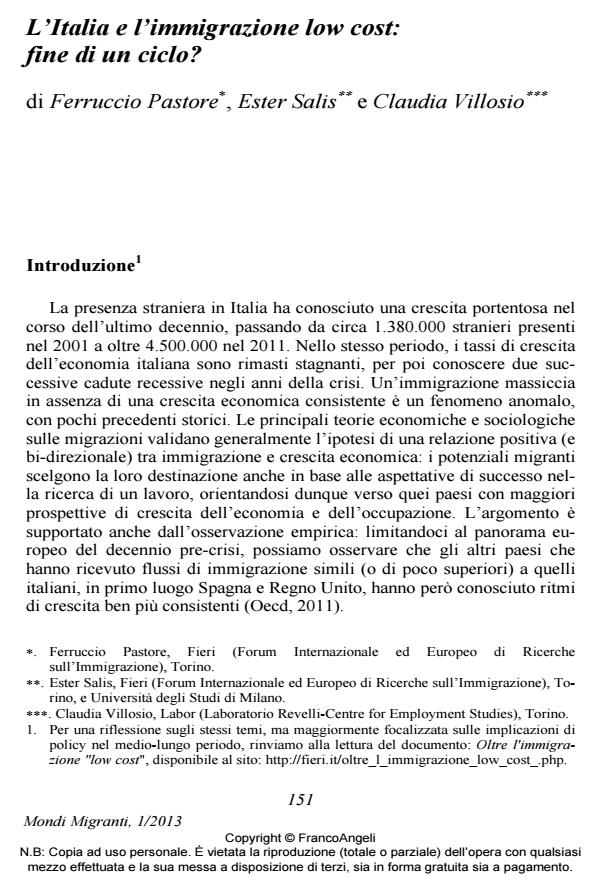L’Italia e l’immigrazione low cost: fine di un ciclo?
Titolo Rivista MONDI MIGRANTI
Autori/Curatori Ferruccio Pastore, Ester Salis, Claudia Villosio
Anno di pubblicazione 2013 Fascicolo 2013/1
Lingua Italiano Numero pagine 21 P. 151-171 Dimensione file 724 KB
DOI 10.3280/MM2013-001008
Il DOI è il codice a barre della proprietà intellettuale: per saperne di più
clicca qui
Qui sotto puoi vedere in anteprima la prima pagina di questo articolo.
Se questo articolo ti interessa, lo puoi acquistare (e scaricare in formato pdf) seguendo le facili indicazioni per acquistare il download credit. Acquista Download Credits per scaricare questo Articolo in formato PDF

FrancoAngeli è membro della Publishers International Linking Association, Inc (PILA)associazione indipendente e non profit per facilitare (attraverso i servizi tecnologici implementati da CrossRef.org) l’accesso degli studiosi ai contenuti digitali nelle pubblicazioni professionali e scientifiche
- Gli effetti del COVID-19 sulla popolazione in età da lavoro straniera in Italia Roberto Quaranta, Francesco Trentini, Claudia Villosio, in MONDI MIGRANTI 1/2021 pp.61
DOI: 10.3280/MM2021-001004 - Migrant women’s employment in paid reproductive work through the crisis: the case of Italy (2007-2012) Anna Di Bartolomeo, Sabrina Marchetti, in Investigaciones Feministas /2016 pp.57
DOI: 10.5209/rev_INFE.2016.v7.n1.52197 - Understanding Transnational Labour Market Trajectories of African-European Migrants: Evidence from the MAFE Survey Eleonora Castagnone, Tiziana Nazio, Laura Bartolini, Bruno Schoumaker, in International Migration Review /2015 pp.200
DOI: 10.1111/imre.12152 - Perdita del lavoro, crisi economica, benessere economico e soggettivo: somiglianze e differenze fra lavoratori italiani e stranieri in Lombardia Diego Coletto, Simona Guglielmi, in MONDI MIGRANTI 1/2013 pp.123
DOI: 10.3280/MM2013-001007 - Looking for the Best and Brightest? Deservingness Regimes in Italian Labour Migration Management Paola Bonizzoni, in International Migration /2018 pp.47
DOI: 10.1111/imig.12447 - Migration and Domestic Work Sabrina Marchetti, pp.53 (ISBN:978-3-031-11465-6)
Ferruccio Pastore, Ester Salis, Claudia Villosio, L’Italia e l’immigrazione low cost: fine di un ciclo? in "MONDI MIGRANTI" 1/2013, pp 151-171, DOI: 10.3280/MM2013-001008